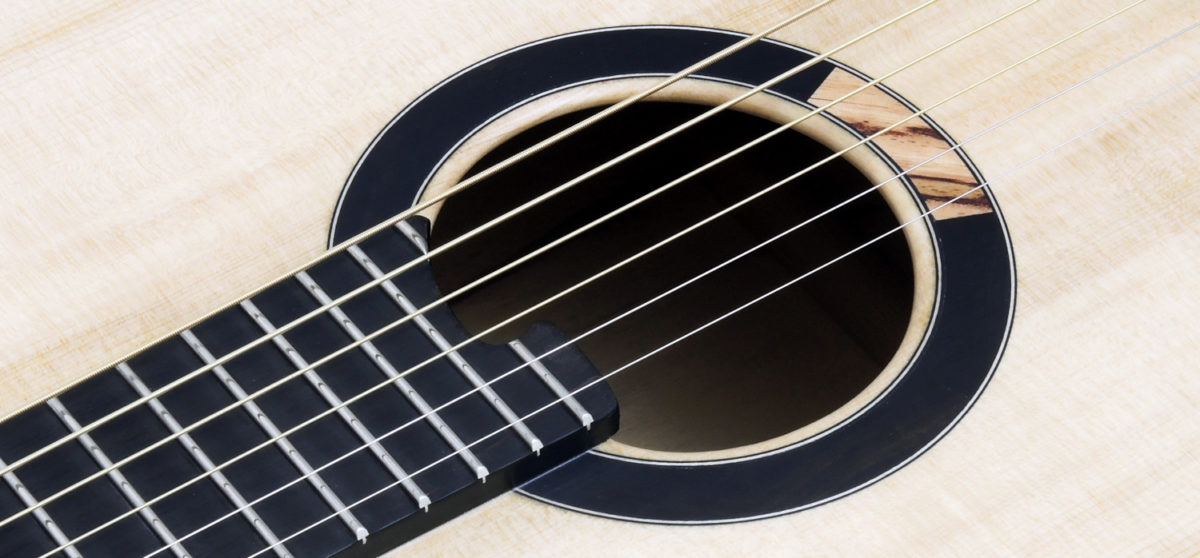The soundhole is where the sound emerges. In a nutshell, this statement sums it up, but as always in lutherie, the soundhole is one of many components that influence sound development. Therefore, the size, position, and a few other features of the soundhole should be considered carefully.
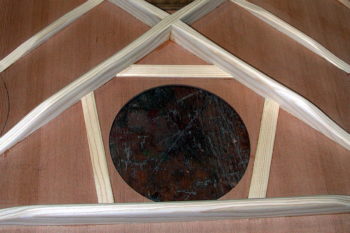
Recently we had a customer who reached into the sound hole and inspected the soundboard with his thumb and forefinger. Afterwards, he said, "It's pretty thick, that top," but he was wrong. What the customer actually felt was the reinforcement that is glued around the sound hole to the underside of the top.
Functions of the Sound Hole
How is sound actually created in a guitar? It may appear strange, but actually the guitar body is an air pump. Stimulated by the plucking of the string(s), the soundboard is set into an up-and-down oscillation. This causes the air in the body to move and exit the sound hole. You can feel this draft when you hold your hand over the sound hole of a guitar. The goal of the guitar maker is to shape the tone by influencing this vibration. The top bracing is one of the main influencing factors, but a poorly designed soundhole can negate the effect of the best bracing.
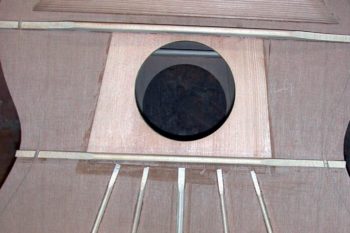
The sound Hole's Valve Function
The sound hole regulates the compensation of pressure, and here we are back to our customer's comment. If the sound hole were not reinforced from the inside, the area around the hole would be as flexible as the rest of the top. But what is desired for the soundboard, namely to resonate and if possible at the slightest touch of the strings, is counterproductive for the soundhole.
The sound hole must be stiff. For this reason, reinforcements are glued either on both sides or around the entire sound hole. After all, the sound should leave the body with pressure and be carried as far as possible into the room. If the top area around the sound hole could also vibrate, it would then eliminate part of the pressure.
Size of the Sound Hole
The luthier's precise idea of the desired sound is very helpful, because the size of the sound hole depends on it, among other things. A smaller sound hole helps the projection of basses, while a larger sound hole makes the tone more open and rich in treble.
Position of the Sound Hole
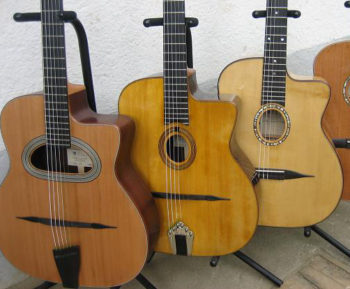
The center of the sound hole on classical guitars is at 1/4 of the scale length. Here, too, the tone can be influenced. Slight deviations to the front or back change the tone color.
On steel-string guitars, the sound hole is chosen to be larger in proportion to the body. However, the relationship between sound hole and body size is the same as for classical guitars.
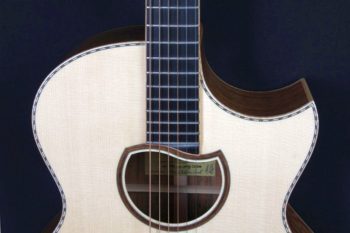
Shape of the Sound Hole
The "classic" soundhole of an acoustic guitar is usually circular, although the so-called Gypsy guitars (Selmer/Macaferri) regularly deviate from this with an oval or D-shaped soundhole. This is caused on one hand by the tradition and on the other hand by the sound requirements of these models which differ strongly from the conventional acoustic guitars.
For the sake of completeness, the F-holes on jazz guitars should also be mentioned. However, the construction of these guitars differs so much from conventional acoustic guitars that a closer look would go beyond the scope of this article.
Experiments with the Sound Hole
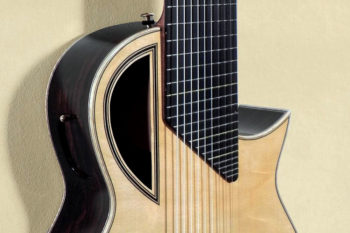
For a considerable time now, guitar makers have also been experimenting with the shape of the sound hole. The rule is that anything that creates air friction and can flutter is detrimental to sound transmission. A jagged sound hole would be an extreme example of unfavorable design.
Moderate, well thought-out changes in shape with appropriate stabilisation on the underside can give the acoustic guitar a very individual touch and have a high recognition factor.
From a purely static point of view, the position of the sound hole in the horizontal center of the soundboard is not optimal. To ensure its stability, it must be supported by a large number of braces.
By taking the sound hole position off center, the statics are stabilised and the luthier can save quite a bit of bracing. A lateral sound hole also has a positive effect on the vibrating surface, as it increases it.
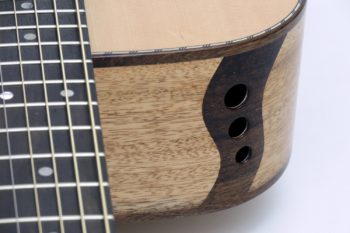
The shifting of the sound hole to the side of the top is not without consequences for the sound. This is particularly noticeable on classical guitars, which require a concise separation of the individual registers.
The positioning of the sound hole on the side is still in an experimental stage. The fact that guitar makers are taking the trouble to find new ways to further optimise the sound by moving the sound hole speaks to the vitality of our craft, but at this point in time it is not yet possible to establish any universally valid rules about size, shape or position.
Sound Hole in the Side
Another variation is to move the sound hole to the side of the guitar or to build a side sound hole in addition to the "normal" one.
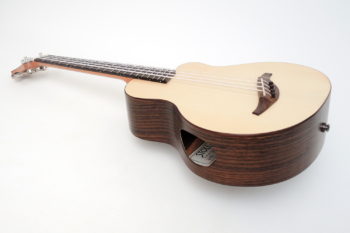
With the depicted Bass Ukulele the hole was completely moved to the side to achieve a bigger resonating top area.
Additional side sound holes can serve as a monitor for the guitar player and improve the overall sound. These side soundholes may be a combination of several tiny holes or just one irregularly or regularly sized hole.
However, the guitar builder must be careful with the size and shape of the sound holes and adjust the bracing accordingly, otherwise these changes could quickly lead to the opposite of what they were originally intended to achieve.

